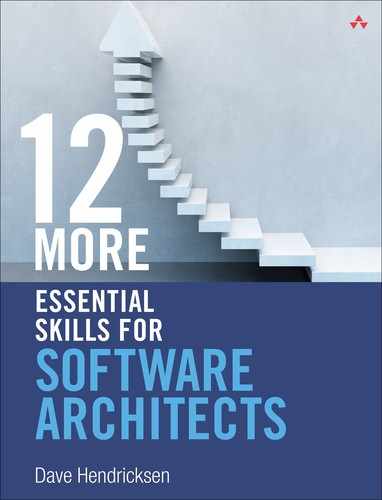Book Description
Master The Crucial Technical Skills Every Software Architect Needs!
To succeed as a software architect, you must master both technical skills and soft skills. Dave Hendricksen illuminated the soft skills in his highly-regarded 12 Essential Skills for Software Architects. Now, in 12 More Essential Skills for Software Architects he turns to the technical side.
Drawing on his decades of experience, Hendricksen organizes technical skills into three areas.
PROJECT SKILLS: driving projects from ideation through delivery
TECHNOLOGY SKILLS: building, buying, and/or leveraging the right technologies
VISIONARY SKILLS: realizing an architectural vision that improves long-term competitiveness
He helps you develop and sharpen these key technical skills: from conceptualizing solutions to developing platforms and governance, and from selecting technology innovations to infusing architectures with an entrepreneurial spirit.
This guide reveals the technical skills you need and provides a coherent framework and practical methodology for mastering them.
Taken together, Hendricksen’s two books offer the most complete, practical pathway to excellence in software architecture. They’ll guide you through every step of your architecture career—from getting the right position to thriving once you have it.
Essential Architect Skills
Visionary Skills
Entrepreneurial Execution
Technology Innovation
Strategic Roadmapping
Technology Skills
Governance
Platform Development
Know-how
Architectural Perspective
Project Skills
Estimation
Partnership
Discovery
Management
Conceptualization
Dave Hendricksen is a big data architect for Thomson Reuters, where he works closely with the firm’s new product development teams to create innovative legal products for large-scale online platforms such as Westlaw.com. Hendricksen presented “Designing and Building Large-Scale Systems in an Agile World” at Carnegie Mellon University’s influential Software Engineering Institute.
Table of Contents
- Title Page
- Copyright Page
- Contents
- Preface
- Acknowledgments
- About the Author
- Part I: Project Skills
- Part II: Technology Skills
- Part III: Visionary Skills
- Epilogue. Bringing It All Together
